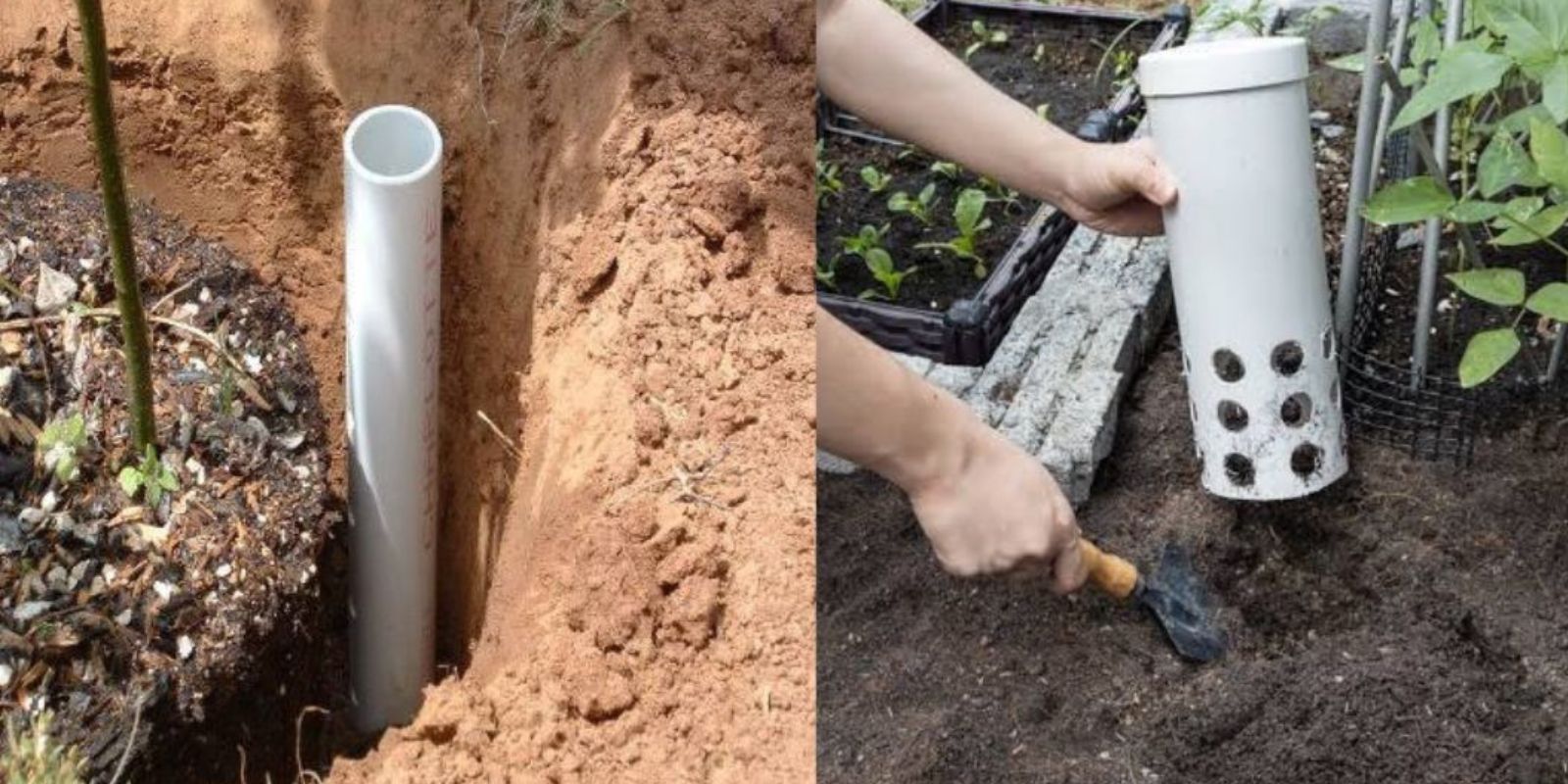Gardening is as much about innovation as it is about nurturing nature. Over the years, gardening enthusiasts have discovered numerous hacks to make plant care easier, more efficient, and sustainable. One such genius method is the use of PVC pipes for efficient watering. This simple yet effective technique ensures your plants receive water directly at their roots, minimizing water wastage and fostering healthy growth. In this article, we’ll explore how this system works, its benefits, and a step-by-step guide to creating your own PVC watering system.
The Concept Behind PVC Pipe Irrigation
Plants thrive when their roots are well-hydrated. Traditional watering methods often result in surface watering, where water evaporates before it can deeply penetrate the soil. By using PVC pipes, you can deliver water directly to the root zone, ensuring consistent moisture and reducing the likelihood of overwatering or water runoff.
This method mimics some ancient irrigation techniques, such as olla pots, but with a modern twist. It’s cost-effective, easy to set up, and perfect for both small gardens and large-scale vegetable patches.
Why Use PVC Pipes for Watering?
The benefits of this method are numerous:
- Water Efficiency: Reduces water wastage by targeting the root zone.
- Consistent Moisture: Ensures plants receive steady hydration, crucial during hot weather.
- Time-Saving: Eliminates the need for frequent watering sessions.
- Nutrient Delivery: Allows you to add liquid fertilizers directly into the pipe for optimal root absorption.
- Customizable: Suitable for gardens, pots, and raised beds.
Materials Needed
Before you get started, gather these materials:
- PVC pipe (2-3 inches in diameter).
- A hand drill with a small bit.
- Hacksaw (if cutting the pipe).
- Sandpaper (optional, to smooth rough edges).
- A marker.
- Compost or organic fertilizer (optional).
Step-by-Step Guide to Setting Up Your PVC Watering System
1. Choose the Right PVC Pipe
Select a pipe that’s appropriate for the size of your garden. For small potted plants, a short pipe will suffice, while larger garden beds may require longer pipes. A diameter of 2-3 inches is generally ideal, allowing enough space for water flow.
2. Cut the Pipe to Size
If the pipe is too long, use a hacksaw to cut it to the desired length. Typically, the pipe should be long enough to reach deep into the soil near the root zone while leaving a few inches exposed above the surface.
3. Drill Holes
Using a hand drill, create small holes along one side of the pipe. These holes should be evenly spaced and only large enough to allow water to seep out slowly. Avoid making holes on the upper section of the pipe to prevent water from escaping too quickly.
4. Prepare the Soil
Before placing the pipe, loosen the soil around the plant to ensure it’s aerated and ready to receive water.
5. Position the Pipe
Bury the pipe vertically or at an angle near the plant, with the perforated side facing the roots. Ensure the pipe is stable and won’t shift when you water. Leave the top 2-4 inches exposed above the soil for easy access.
6. Add Water
Pour water directly into the exposed end of the pipe. The water will slowly seep out through the drilled holes, hydrating the roots effectively.
7. Enhance with Nutrients
For added benefits, you can mix compost tea, diluted liquid fertilizer, or any nutrient-rich solution into the water before pouring it into the pipe.
Tips for Success
- Spacing: If you’re installing pipes in a larger garden bed, space them out evenly, ensuring each plant has access to water.
- Pipe Maintenance: Periodically check for clogs in the holes and clean the pipe if needed.
- Combine with Mulching: Cover the soil with mulch to retain moisture and keep roots cool.
- Monitor Plant Health: Adjust watering frequency based on plant needs and weather conditions.
Applications of the PVC Watering System
1. Vegetable Gardens
Crops like tomatoes, cucumbers, and peppers benefit significantly from consistent root hydration. Use PVC pipes to optimize their growth and prevent issues like blossom-end rot caused by inconsistent watering.
2. Potted Plants
Small PVC pipes can be installed in larger pots to ensure water reaches deep-rooted plants without soaking the surface excessively.
3. Raised Beds
For gardeners using raised beds, PVC pipes can provide an efficient irrigation system, ensuring all plants receive adequate water.
Why This Technique is a Game-Changer
1. Saves Resources
Water is a precious resource, and traditional overhead watering systems often lead to evaporation losses. By focusing water delivery directly to the roots, this system minimizes waste, making it an eco-friendly option for gardeners.
2. Encourages Root Growth
Deep watering encourages plants to develop robust root systems, which are essential for their health and productivity.
3. Ideal for All Gardeners
Whether you’re a beginner or an experienced gardener, this technique is easy to implement and adapt to your specific needs.
A Sustainable Gardening Practice
In an era where sustainability is crucial, adopting efficient watering techniques like PVC irrigation can make a big difference. Not only does it save water, but it also reduces the time and energy spent on manual watering, allowing gardeners to focus on other aspects of plant care.
Interact with Us!
Have you tried this genius watering method yet? Let us know in the comments below! If you have tips or tricks to make it even better, we’d love to hear them. Don’t forget to share your results and inspire fellow gardeners to join the sustainable gardening movement!

